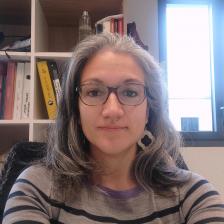Enhancing Tuberculosis Diagnosis with AI: Insights from a Study in Manila, Philippines
What was the aim of your study?
Valentina Carnimeo: Our study aimed to test the feasibility and acceptability of a new technology: computer aided detection (CAD) , to improve tuberculosis (TB) screening in resource-limited settings and among vulnerable populations. This technology uses AI algorithms to analyze radiographs and detect signs suggestive of TB. We wanted to assess the feasibility of implementing CAD in active case-finding at community level, including an essential calibration process to determine the optimal threshold above which a confirmatory TB test should be performed. This evaluation took place in a context where MSF operates, in Tondo, a densely populated district of Manila in the Philippines.
How is TB diagnosed, and what are the challenges?
Valentina Carnimeo: Diagnosing tuberculosis is a complex process, often requiring several tests to confirm the presence of Mycobacterium tuberculosis, the bacterium responsible. The WHO recommends the use of molecular tests, such as GeneXpert, which, although effective, require an equipped laboratory and are relatively costly.
Chest X-rays are often used when people have symptoms or a high risk of TB, to select people to be referred for this molecular test. However, a major challenge is that many people with TB have no symptoms, and so are not identified using this approach. In addition, interpreting X-rays requires medical expertise, which is often lacking in the regions where MSF operates. These challenges are compounded by the stigma attached to tuberculosis disease, lack of information and distrust of healthcare systems leading to difficulties in accessing diagnosis and care.
Without correct and timely diagnosis, it is impossible to institute treatment for active tuberculosis, allowing the disease to spread further.
Why did MSF opt for active case-finding in Tondo?
Valentina Carnimeo: Active case-finding involves mass screening for TB of the general community using chest Xray. People found to have an abnormal chest Xray then have a molecular test for TB. It is a crucial strategy in the fight against tuberculosis, not least because it fills important gaps in the identification of TB cases, particularly in the populations most affected by the disease. This is why MSF, in collaboration with the Manila Department of Health, has opted for active case-finding in communities. In Tondo, where TB services were severely disrupted by the COVID-19 pandemic, and where living conditions are conducive to the spread of the disease, MSF used this method to screen for tuberculosis. Thanks to AI-assisted radiography, we were able to better identify potential cases who were then offered a diagnostic GeneXpert molecular test.
What lessons can you draw from your study regarding the use of CAD?
Valentina Carnimeo: A key aspect of our study was to evaluate and adjust the sensitivity threshold of the CAD score to determine at what point a person should undergo additional tests, notably the GeneXpert test. The CAD produces an abnormal score between 0 and 100, indicating the probability that the radiograph shows signs suggestive of tuberculosis. At Tondo, we started with a threshold set at 25, which meant that a GeneXpert test was required for around 35% of those screened. This score was adjusted according to the data collected, gradually increasing to 28 and then 32, in order to optimize the balance between detection sensitivity and the capacity of the resources available to confirm cases.
What were the results of your study?
Valentina Carnimeo: Between January and October 2023, we screened over 12,000 people in Tondo, using chest Xray and CAD. Nearly 8% of chest Xrays showed signs suggestive of active tuberculosis. Of this total, some 4,151 GeneXpert tests were performed, with a positivity rate of 5.6% among all screened patients. In the end, almost 700 people were diagnosed with TB, but only 54% of them began treatment. This shows that, beyond diagnosis, there are still major challenges linked to patients' acceptance of and compliance with treatment, often due to stigmatization, fear of treatment, or even lack of treatment.
What are your conclusions?
Valentina Carnimeo: Our study shows that the use of CAD linked to chest Xray screening is not only feasible, but also that the innovative method we used to calibrate the CAD is effective in screening for tuberculosis in high-risk urban populations such as Tondo. This approach achieved high screening rates, with good community acceptability. However, the low rate of patients starting treatment highlights the need to improve awareness, combat stigma and strengthen community involvement and ensure access to treatment to ensure comprehensive care. The results indicate that this technology could be deployed in similar contexts, but that it is essential to accompany this with efforts to encourage linkage to treatment.
© Ezra Acayan











